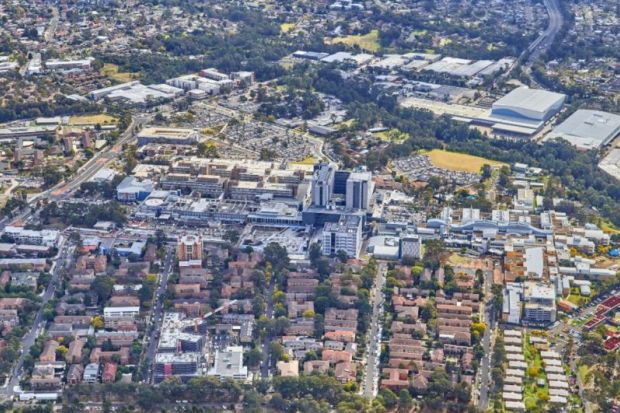Two Sydney universities are angling for help in commercialising their research in return for their efforts to cultivate the city’s geographic heart.
The University of Sydney and Western Sydney University (WSU) say governments, industry and community groups must do more to capitalise on the pair’s combined A$1.2 billion (£640 million) investment in a central band of suburbs known as the Greater Parramatta and Olympic Peninsula region, or “GPOP”.
In a joint vision statement released on 1 November, the two universities outline what is needed to realise “one of the biggest near-term growth opportunities” in Australia. “GPOP undertakes world class research, but could leverage it more,” the document says.
“More needs to be done to strengthen commercialisation. This requires new approaches to attract and engage a wider range of private companies.”
The brainchild of a task force called the Greater Sydney Commission, GPOP marshals efforts to turn the central portion of the burgeoning metropolis into a “successful inner-urban hub”. The commission has highlighted a health and education “super-precinct”, located in the suburb of Westmead, as key to the region’s prosperity.
The vision statement points out that the University of Sydney has committed A$500 million to the precinct, where it is developing its second comprehensive campus, while much of the A$700 million WSU has invested in the region in recent years has also been injected into the precinct.
“While there is much to be proud of, there is more to do,” the document says, stressing the importance of “continued investment, policy support and consistency”.
WSU vice-chancellor Barney Glover said western Sydney would be “the epicentre of economic development in Australia for the next decade and beyond”, spurred by demographic growth, new roads and railways, hospital upgrades and a second international airport.
“That intense activity means that as the university of the region, we’ve got a role to play to deliver the graduates of the future,” he said.
He said WSU and the University of Sydney would be doing a “huge amount” in Sydney’s central region, developing campuses and precincts and engaging with business and health. “We’re telling government, this is pretty impressive stuff and we need a few things from you to make sure this is connected and supported – that the planning is right so we can achieve great outcomes for the central city.”
The document says research commercialisation confers “an ongoing source of competitive advantage for a region”, building export potential and creating “a magnet for talent and further investment”. But more businesses must be attracted to “participate in commercialisation of research outputs”.
“A range of expanded strategies could be investigated to accelerate entrepreneurship and business growth,” the document says.
It lobbies for better access to “de-identified public data”, shared access to high-cost laboratories and facilities, and public sector investment in “specialised research assets”. “There is also likely to be a role for conventional investor-attraction incentives,” it adds.






